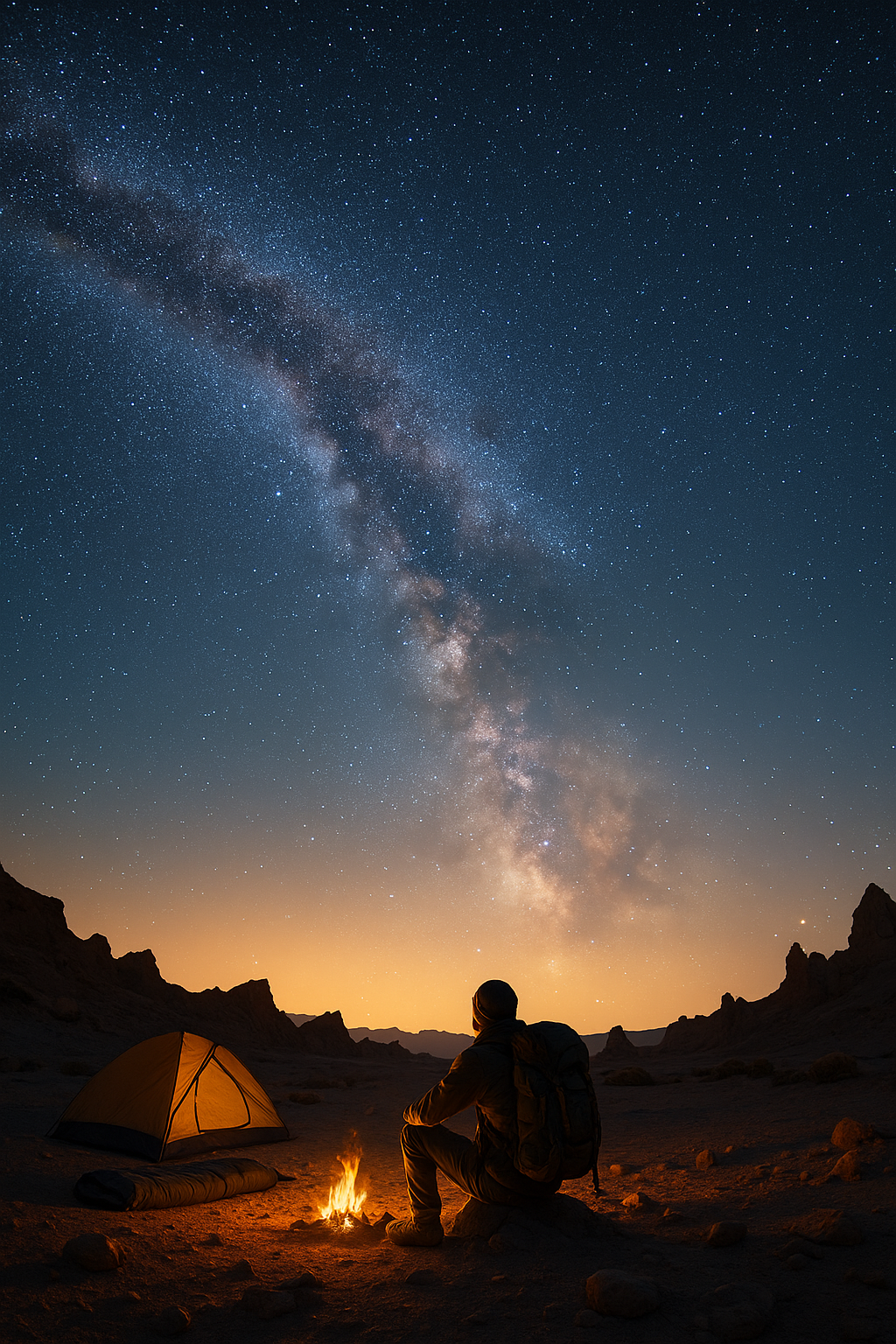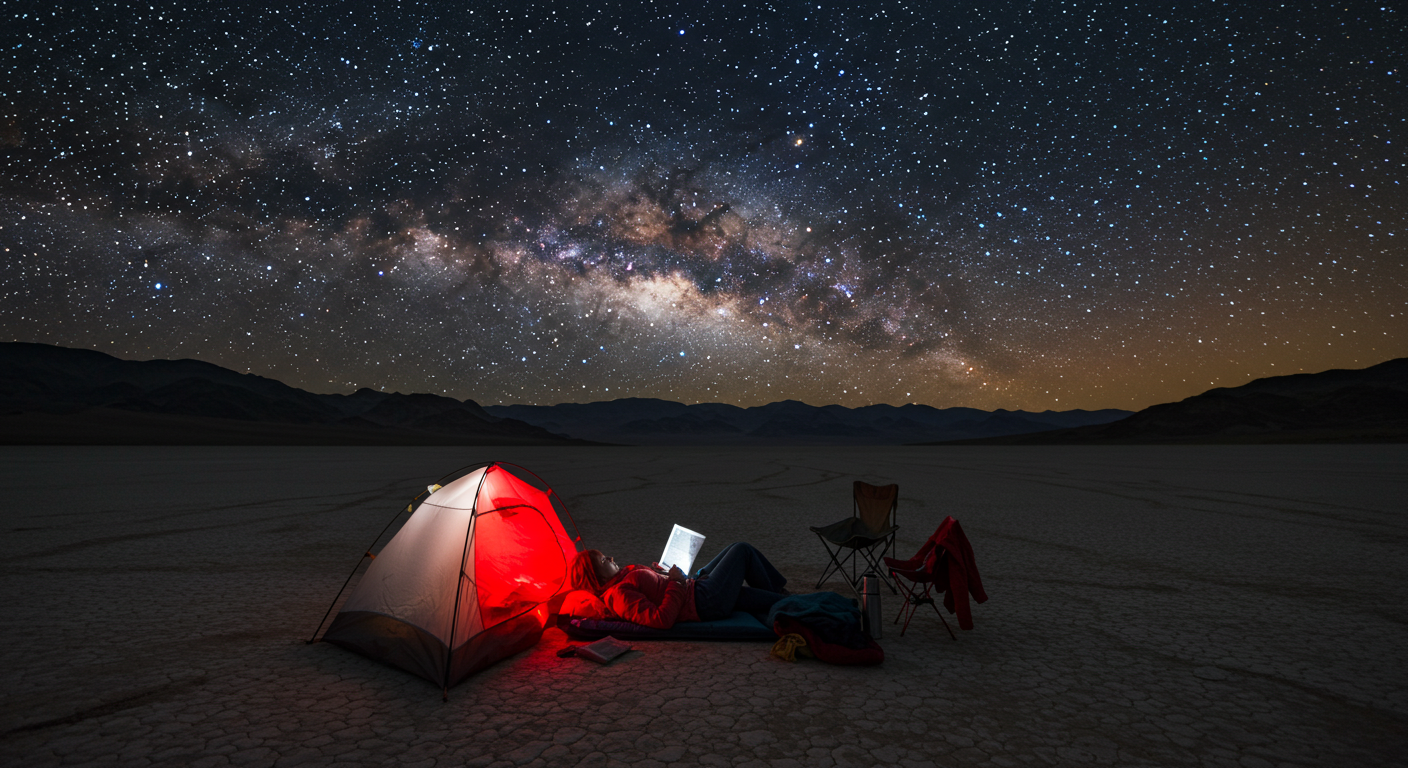
The first time I saw the Milky Way with my naked eye, I was broke, sleeping in a $15 hostel in Chile’s Atacama Desert, and questioning every life choice that led me there. Then the sun set, the sky exploded into a canvas of light I’d never imagined, and suddenly nothing else mattered.That moment changed how I think about travel. You don’t need luxury resorts or expensive gear to touch the infinite. Some of the most profound experiences happen when you strip away everything except wonder.
Unplug and Relax Under the Stars with RVezy
Escape the hustle and bustle of everyday life and find your perfect peaceful retreat with RVezy. Rent an RV, motorhome, or travel trailer, and enjoy the tranquility of the open road. Whether it’s by a quiet lake, in the mountains, or under a vast night sky, RVezy lets you unwind and recharge, all while surrounded by nature’s beauty.
Each RVezy booking comes with:
- $2M Insurance for ultimate peace of mind
- 24/7 Roadside Assistance for any unexpected moments
- Bilingual Support to ensure everything goes smoothly
Leave the stress behind and focus on what matters: relaxation, fresh air, and stargazing in the comfort of your own home on wheels.
Get $25 off your USA booking with promo code RVEZYUSA25
Book your peaceful getaway now at RVezy.com and let nature restore your soul.
Why Astrotourism Doesn’t Have to Break Your Bank
The night sky is the ultimate equalizer. Whether you’re a billionaire with a private observatory or a backpacker with binoculars from a gas station, we’re all looking at the same stars our ancestors navigated by. The astrotourism industry wants you to believe you need specialized tours, high-end equipment, and premium accommodations. Here’s what they won’t tell you: the best stargazing often happens in the simplest places, with the most basic setups.
What you actually need:
- Dark skies (free, if you know where to look)
- Clear weather (timing, not money)
- Patience (priceless, but costs nothing)
7 Dark-Sky Destinations That Won’t Empty Your Wallet
Atacama Desert, Chile: Where Earth Meets Space
The driest non-polar desert on Earth offers 300+ clear nights per year. NASA tests Mars rovers here because it looks like another planet.
Real talk: Skip the expensive observatory tours. Stay in San Pedro de Atacama’s budget hostels ($20-30/night), grab supplies at the local market, and drive 30 minutes to Valle de la Luna after sunset. Bring layers—desert nights drop to near-freezing, and you’ll want to stay out for hours.
What you’ll see: The Southern Cross, Magellanic Clouds, and a Milky Way so bright it casts shadows.
Big Bend National Park, Texas: America’s Dark Sky Sanctuary
This remote corner of Texas earned International Dark Sky Park status for good reason. It’s so isolated that the nearest city light is 100+ miles away.
Budget hack: Camp at Rio Grande Village ($15/night) or primitive backcountry sites (free with permit). The park offers free astronomy programs during peak season, complete with telescopes and expert guides.
Personal experience: I’ve watched meteor showers here where you could count 60+ shooting stars per hour. The silence is as overwhelming as the stars.
Ladakh, India: Himalayan Heights Meet Cosmic Views
At 11,000+ feet elevation, Ladakh’s thin air creates incredibly sharp star visibility. The region’s Buddhist monasteries add a spiritual dimension that makes stargazing feel like meditation. Shoestring strategy: Budget guesthouses near Pangong Lake start at $10/night. Local drivers often know the best stargazing spots and will drop you off for sunset/pickup after midnight for minimal cost.
Shoestring strategy: Budget guesthouses near Pangong Lake start at $10/night. Local drivers often know the best stargazing spots and will drop you off for sunset/pickup after midnight for minimal cost.
Cultural bonus: Many monasteries offer early morning prayers that pair beautifully with pre-dawn planet watching.
Namibia’s NamibRand Nature Reserve: Africa’s First Dark Sky Reserve
The world’s oldest desert meets some of Earth’s darkest skies. The landscape looks so alien that film crews use it for Mars scenes.
Money-saving approach: Travel during shoulder season (May-August), stay in Sesriem’s budget lodges, or join overland truck tours that include stargazing stops. Group travel here can cut costs dramatically.
Why it’s worth it: You’ll see constellations impossible to spot from northern latitudes, plus the Southern Cross rising over red sand dunes.
Tenerife, Canary Islands: Europe’s Stargazing Capital
Mount Teide’s high altitude and strict light pollution laws create exceptional viewing conditions just hours from major European cities.
Smart savings: Stay in rural villages rather than resort areas, use public buses to reach Teide National Park, and time visits during weekdays when accommodations drop 30-40%.
Local secret: Free stargazing happens naturally at Teide’s cable car base station after tourist crowds leave.
Mauna Kea, Hawaii: Touching Space on Earth
At 13,796 feet, Mauna Kea’s summit hosts world-class observatories, but the real magic happens at the free Visitor Information Station at 9,200 feet.
Budget reality: Hawaii isn’t cheap, but Mauna Kea’s stargazing is. The VIS offers free telescopes, astronomy talks, and some of the clearest skies on the planet every night weather permits.
Pro tip: Bring serious winter gear. I’ve seen snow at the summit in July.
Aoraki Mackenzie, New Zealand: Gold-Standard Southern Skies
This Gold-rated International Dark Sky Reserve offers views of the southern hemisphere’s greatest hits: the Southern Cross, Magellanic Clouds, and seasonal views of Jupiter and Saturn that will spoil you forever.
Backpacker approach: Lake Tekapo’s hostels offer stargazing packages, or camp at the lakefront for free spectacular views. Time visits during New Zealand’s winter (June-August) for longest nights and clearest skies.
Get $60 Fi Credit – Stay Connected Globally with Fi!
Hey!
I know how important it is to stay connected when you’re out exploring new places—whether it’s for work, family, or just to share your adventures. That’s where Fi comes in. With Fi, you get seamless service in over 200 countries, no roaming charges, and all the flexibility you need for your solo journey.
Why Fi is Perfect for Solo Travelers:
- Global Coverage: Whether you’re roaming through Europe, exploring Southeast Asia, or trekking across remote areas, Fi has you covered in over 200 countries. No more worrying about crazy roaming fees!
- Stay Connected Anytime: Fi works effortlessly on multiple devices, so you can stay in touch with friends, family, or even work while you’re on the move.
- Flexible & Cost-Effective: Only pay for what you use. It’s the ideal plan for solo adventurers who want flexibility and control over their travel expenses.
Ready to Start Earning Rewards?
Seriously, it’s simple. Click my referral link, get your friend to sign up, and once they complete the first month, you get $60 Fi credit. Win-win, right?
🔗 Click here to start referring and earn $60 Fi credit!
The Real Budget Stargazing Secrets
Timing Beats Money Every Time
New moon phases offer the darkest skies. Plan trips around these dates and you’ll see 10x more stars than during full moon periods, regardless of location.
Shoulder seasons mean cheaper accommodations and fewer crowds, but check weather patterns. Some destinations have specific dry seasons crucial for clear skies.
Your Smartphone Is Your Best Astronomy Tool
Free apps like PhotoPills, Star Walk, or SkySafari turn your phone into a planetarium. They’ll show you exactly when and where to look for planets, satellites, and deep-sky objects.
Red light mode preserves night vision better than expensive red flashlights.
Join the Local Astronomy Community
Most destinations have astronomy clubs that host free “star parties” with telescopes and expert guidance. A quick Google search or Facebook check before traveling often reveals these hidden gems.
Personal story: In Tenerife, I stumbled into a local astronomy group’s weekly meetup. They spent three hours showing me Saturn’s rings, Jupiter’s moons, and nebulae I never would have found alone. Cost: zero euros and a shared passion for the cosmos.
Beyond the Stars: What Budget Astrotourism Really Offers
Chasing dark skies forces you into places tourism hasn’t fully commodified yet. You’ll find yourself in small desert towns, high mountain villages, and remote coastlines where people still point out constellations to strangers.
These aren’t just budget travel destinations—they’re invitations to remember how small and connected we all are under the same vast sky.
The most expensive part isn’t the travel. It’s coming home and realizing you can never again be satisfied with city lights when you know what darkness reveals.
Your First Steps Into the Dark
Start local. Every U.S. state has dark sky locations within driving distance. Find your nearest International Dark Sky Park or use light pollution maps to locate viewing spots.
Practice in your backyard first. Learn the basics of what you’re looking at before you travel. The stars will be the same whether you’re in your hometown or halfway around the world—but your ability to read them makes all the difference.
And remember: the best stargazing happens when you stop trying to capture the perfect photo and start letting the experience capture you.
Want more Astro Content, Click Here.


[…] Check out more Astro Tourism Info Here […]